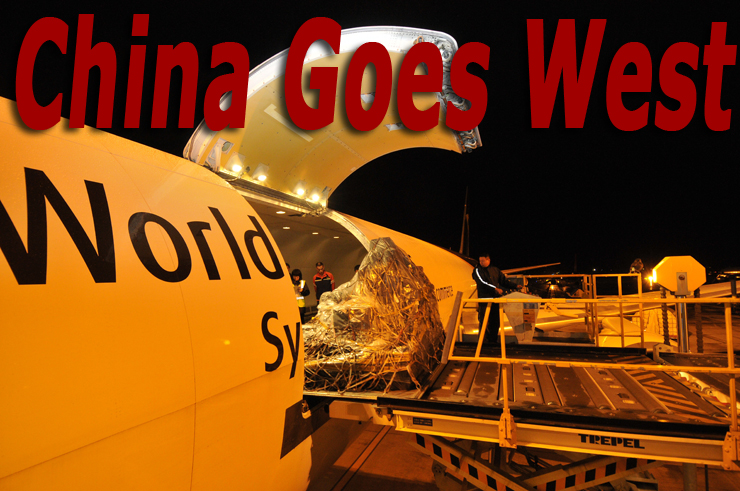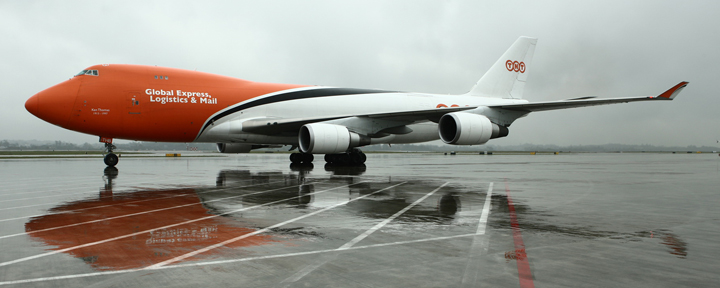
 Anyone
skeptical about the power and trading implications of China’s
‘Go West’ program need only listen to UPS’ Derek Woodward
welcome the launch of the company’s new freighter service from
Chengdu Shuangliu International Airport (CTU) at the end of July. Anyone
skeptical about the power and trading implications of China’s
‘Go West’ program need only listen to UPS’ Derek Woodward
welcome the launch of the company’s new freighter service from
Chengdu Shuangliu International Airport (CTU) at the end of July.
The president of the company’s Asia
Pacific business said the approval of Chengdu-Chongqing as an official
economic zone had made the region highly attractive as a location for
manufacturing. “We believe the area is poised for accelerated
growth in logistics and transportation needs,” he added.
He is not alone in that view. The capital
of Sichuan province has a population of some 13 million people, not
a huge city by Chinese standards. But foreign trade surged 36 percent
in 2010 to US$32.8 billion as Chengdu rapidly emerged as a hi-tech manufacturing
center. Chengdu Shuangliu International Airport is now the busiest airport
in western China and China’s sixth busiest airport overall for
both cargo and passenger traffic.
Less than 200 miles away from Chengdu
is Chongqing, a sprawling city-municipality. It boasts a population
close to 30 million and the fast growing Chongqing Jiangbei International
Airport (CKG), which handled around 180,000 tons in 2009, the last year
for which figures are available. Already a center for the automotive
industry, huge incentives were put in place to encourage its industry
to move up the value chain. In the first eight months of 2010, exports
from Chongqing rose 62.1 percent to $4.2 billion. The city’s GDP
increased by 17.6 percent in the first half of 2010 to $54.51 billion.
Both Chengdu and Chongqing are now attracting
more dedicated freight capacity as demand soars. UPS’ “around-the-world”
MD-11 flight through Chengdu, for example, originates in the U.S., flies
through the company’s European hub in Cologne, Germany, makes
a stop in Warsaw and then transits CTU before flying onto UPS’s
Asia hub in Shanghai.
 |
TNT, meanwhile, launched a thrice-weekly
freighter service between CKG and its air hub in Liege, Belgium, in
October last year.
Cathay Pacific is also looking at boosting
its services to China’s fast growing interior industrial centers.
At present the carrier operates two cargo flights per week to Chengdu
using a passenger aircraft but uplifting only cargo, while for Chongqing,
Cathay operates a twice weekly charter service on behalf of a freighter
forwarder, a deal that was due to end in early August.
“We are looking into operating scheduled
cargo flights to both Chengdu and Chongqing,” said a spokesperson.
Other regions will soon be on the radar
as the Chinese government entices industry with lucrative incentives,
and builds new and upgrades existing airports and other infrastructure
in the interior, giving a vital ‘pull’ to businesses already
being pushed away from the coast by rising land and labor costs.
“For manufacturers with tight budgets
for overhead costs, promises of lower land and labor costs in central
provinces are quite alluring,” said one analyst. “Many big
name manufacturers are already located or relocated in the region; Hewlett-Packard
and Cisco have bases in Chongqing, while Intel’s assembly and
testing facility and Motorola’s research and development center
are located in Chengdu.”
 Claus
Schensema, Managing Director of GAC Shanghai, said central Chinese cities
were growing as manufacturing bases and were now offering higher wages
to keep migrant labor in their areas. “Unlike 10 years ago, where
all went east, now manufacturing is moving westwards,” he told
ACNFT. Claus
Schensema, Managing Director of GAC Shanghai, said central Chinese cities
were growing as manufacturing bases and were now offering higher wages
to keep migrant labor in their areas. “Unlike 10 years ago, where
all went east, now manufacturing is moving westwards,” he told
ACNFT.
“The future as I see it is the development
of central China due to the prohibitive costs and near on 15-20 percent
cost of living adjustments needed to keep professionals working on the
eastern seaboard.”
This will gradually see more foreign airlines
follow the lead set by the integrators and carriers such as Cathay Pacific
by setting up dedicated freighter capacity into central China’s
leading gateways.
Christian Hein, Vice President, Product
Management - Air Freight, Asia Pacific at DB Schenker, predicted the
“strong shift” of consumer electronics assembly into the
Western regions in China, particularly cities like Chengdu and Chongqing,
would continue to gain momentum through 2012.
“However,” he added, “due
to the lack of import volume in these markets, which are primarily export
oriented, these markets will still have much room to grow to become
major air hubs, and this will restrain foreign carriers from establishing
comprehensive services out of these two cities.
“At this stage, component supply
logistics facilities for the consumer electronic assembly are being
replenished by [Vendor Managed Inventory] VMI hubs in the coastal area.
“Hong Kong, Beijing and Shanghai
are used as a backup for overflow cargo originating from Western China.
We expect this to continue for 2012 at least.”
Thereafter, however, once imports do pick
up as anticipated, the more balanced trade witnessed at coastal hubs
would be replicated inland. “Increasing import volumes into the
Western China airports will definitely lead to decreasing export rates,”
said Hein.
SkyKing |



 Claus
Schensema, Managing Director of GAC Shanghai, said central Chinese cities
were growing as manufacturing bases and were now offering higher wages
to keep migrant labor in their areas. “Unlike 10 years ago, where
all went east, now manufacturing is moving westwards,” he told
ACNFT.
Claus
Schensema, Managing Director of GAC Shanghai, said central Chinese cities
were growing as manufacturing bases and were now offering higher wages
to keep migrant labor in their areas. “Unlike 10 years ago, where
all went east, now manufacturing is moving westwards,” he told
ACNFT.